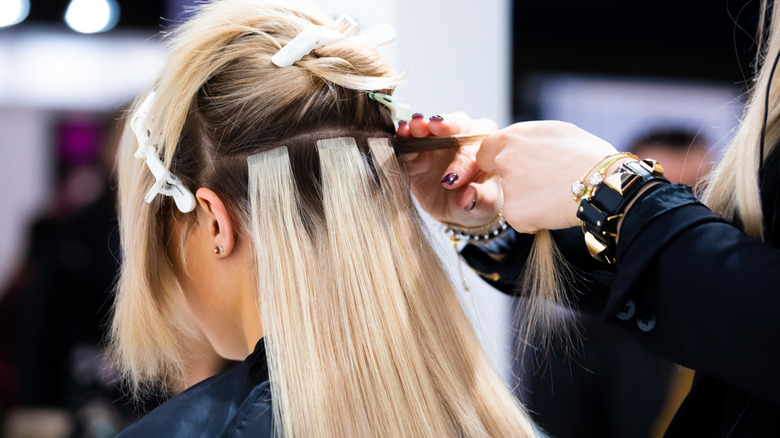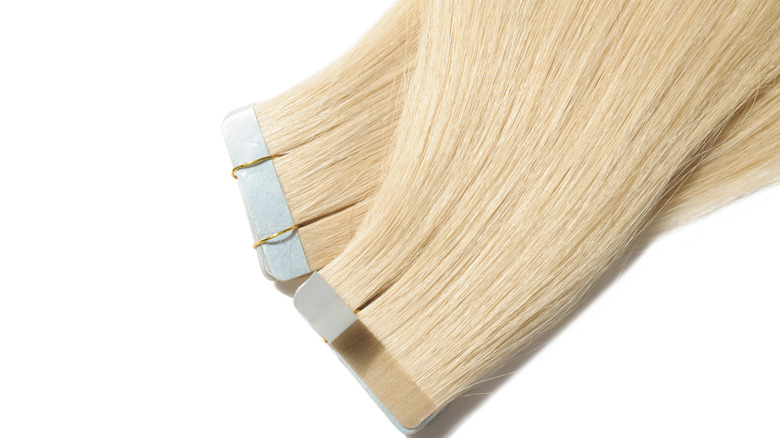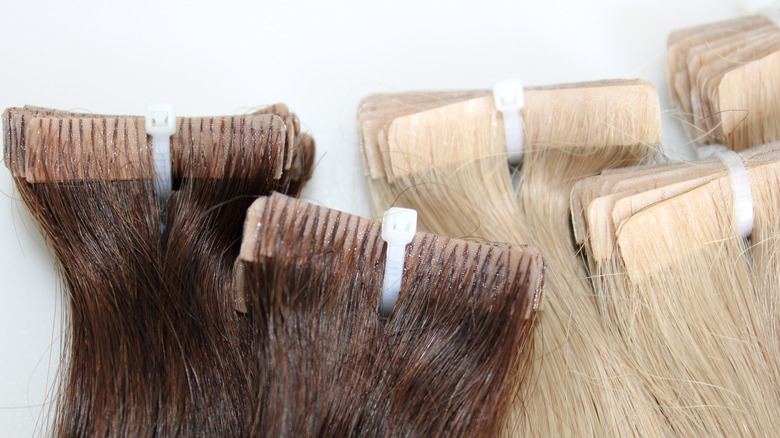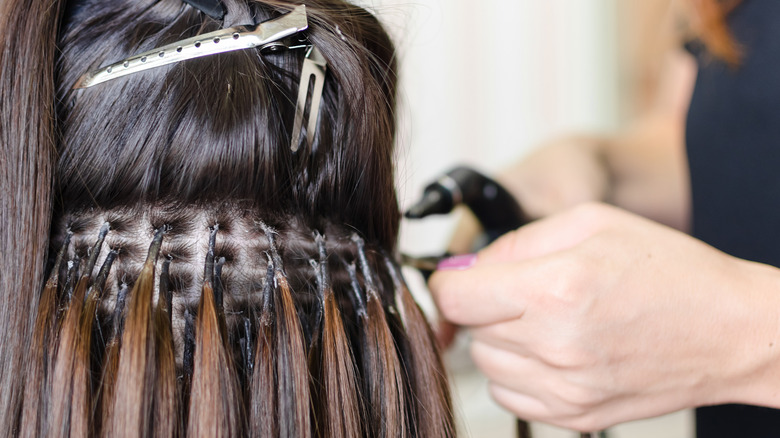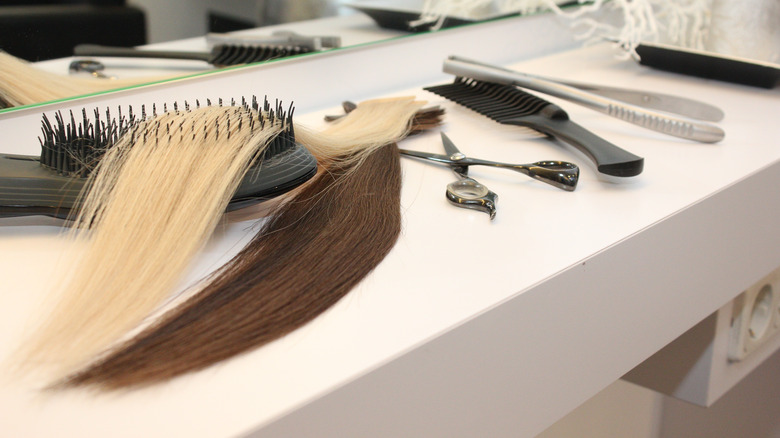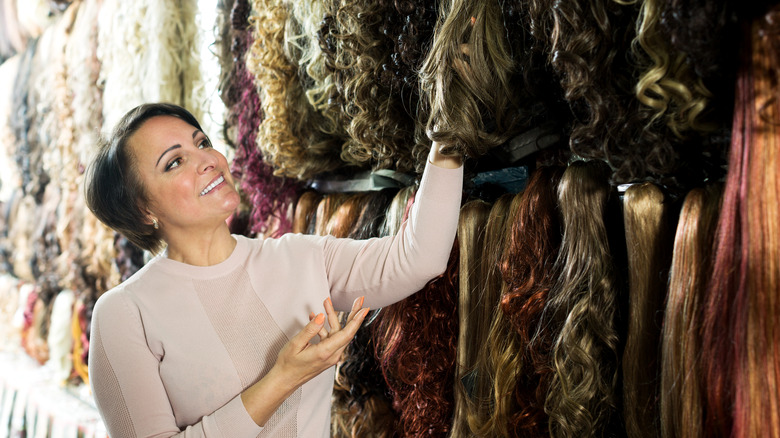What You Need To Know Before Getting Tape-In Hair Extensions
If we had it our way, we'd all be Goldilocks with a full head of luscious, shiny hair. But the truth of the matter is we're all born with different types of strands, and often, many of us struggle with styling our crown of glories to perfection.
This is where hair extensions come into play. A godsent tool to anyone who wishes to have good hair all day, every day, extensions are wefts of hair that work to either add length to your hair or deliver more volume. You can get specific extensions depending on what you want your overall look to be.
Clip-in hair extensions, arguably the easiest type of them all, are those that you can literally just clip onto your hair and call it a day. There are also more complex ones like sew-ins, which are braided into your strands for a secure fit. If you can't commit to either of these, however, there's another option that strikes the balance between the two: tape-in hair extensions.
Tape-in hair extensions explained
Tape-in hair extensions are all the rage right now in the hair extension world, and for a good reason. As you can already tell by the name, they're extensions — usually around 4 centimeters wide — taped or glued onto the roots of the hair. "Tape-ins work in 'sandwiches,' meaning that you place a thin strand of hair between two pieces of extensions, and they all get glued together at the root," detailed stylist Paul Rus (via PureWow).
They are perfect for non-commital types, those who want to have the option to have them removed at any time without feeling too guilty about the cost and the effort it takes to put them on. They're also touted for being lightweight, so you won't feel like you have any extensions installed. Plus, they won't compromise your natural strands since they're only taped to the hair. You won't have to worry about sustaining potential damage to your roots, or any part of your hair, for that matter.
The pros and cons of tape-in hair extensions
The biggest advantage tape-in hair extensions have is that they're relatively painless and that you don't have to spend forever in the salon to have them installed. You're essentially only having pre-assembled wefts of hair strands taped in, so you would only need to commit an hour tops for them, as PureWow reported. No clips, braids, or sewing to worry about! No chemicals or any complicated tools are involved in the application process as well.
If you happen to get bored of the tape-in hair extensions, you can have them taken out just as fast. And if they are of good quality, you can reuse them and have them taped in again at a later time (per Allure). Perhaps the only main drawback is you have to be careful about your scalp's oil secretion. You can't do much exercise or any activity that commands excessive sweating, as those can cause the tape-ins to, well, tape out.
How are tape-in hair extensions installed?
Just like clip-on extensions you can DIY, you can also apply tape-in hair extensions on your own head if you wish. But if you're a newbie or wary about potentially messing with medical-grade adhesive, it's much more recommended to have a professional do it for you (via Cosmopolitan). They are more skilled in sectioning your hair, and they can likely line up the tapes much more seamlessly than you can. Considering how the wefts of hair need to be carefully placed in between your actual hair, it's best to leave it to pros who know their stuff. And besides, unless you have someone to guide you, or you are in the presence of multiple mirrors, it can be tricky to determine the best positioning of the extensions before taping them in. While you can always reposition and move them around later on, you only risk destroying the bond or even causing damage to your locks.
How to maintain tape-in extensions
One great thing about tape-in hair extensions is they don't budge easily, even for routine hair washers. They can last up to eight weeks given proper maintenance. Hairstylist Danielle Keasling told Allure that the secret to perfect-looking tape-ins is frequent brushing, as well as putting your hair up when doing certain activities. "I recommend wearing a loose ponytail or braid when sleeping, exercising, or even when spending long periods of time outside in windy conditions," she said. It's also highly advised to avoid too much heat styling and applying product directly on the adhesives. You never know how a certain ingredient would react to the tape.
Since tape-in hair extensions last up to two months at most, you would also need to have them removed and reapplied closer to your scalp on a regular basis. Not only will this keep your hair healthy, but it will also help in making your extensions look more natural.
Tips for picking the right tape-in extensions
Just like with other hair extension types, there are different tape-in selections to choose from. The rule of thumb is to always go for the kind that resembles your natural hair the most (via HuffPost). That way, the extensions can blend easily and look as if they're actually yours. But if you wish to go for a different texture, just be diligent about salon appointments. The last thing you want is for varying textures of strands to show up on your head.
It's also worth noting that like other types of extensions, tape-in hair extensions vary in thickness. After all, they do exist to add volume and length to your hair. But the thickness of your extensions primarily hinges on how thick (or thin) your existing strands are in the first place. Your goal is for the extensions to blend naturally, so it's important to be careful about the quantity you apply if you're going the DIY route. If you're consulting with a professional, they can likely tell you the right amount to install.
